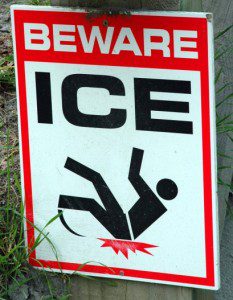
Knowing Your Pain is Your Gain
Here is something that may seem obvious once it is said out loud, but let me just say it: we all have pain. I think that most would agree that pain sucks. Personally, I thank goodness for this amazing communication tool that we have been born with. Just imagine if you were to touch a hot stove or catch your finger in a mouse trap and not feel anything. The complications of the injury would be far more severe if we were to not quickly withdraw our hand. We also learn, because of the painful stimulus, that touching hot things or putting our hands where they don’t belong is not a good idea.
Pain is simply your body telling you a story. As a physiotherapist, I have to listen to and appreciate these stories in order to help determine not only what has occurred, but also how to best help my patient.
I like to use a simple analogy: just as we learn how to understand and respond to the noises that our car is telling us, so too must we listen to our body’s “noises”. It is my assertion that the most important vehicle in your life is your body. Consider that your body is the one and only car you will EVER get to drive – you should consider getting to know as much about your body as you possibly can. I need not remind you that if you were only allowed one car for life you would research the best fuel that you will put into it, get to the shop quickly if it were running strange, get regular tune ups, drive carefully and learn as much as possible about your lifelong vehicle. Treat your body like you would a Ferrari, Lamborghini or whatever your dream vehicle might be. The purpose of this article is not to delve deep into the world of pain, as it is rather cumbersome and complex to cover in a single article, but instead to give you, as a race car driver of your one and only high performance vehicle, the knowledge as to what questions you should be prepared to answer in order to get your machine running smoothly.
listen to our body’s “noises”. It is my assertion that the most important vehicle in your life is your body. Consider that your body is the one and only car you will EVER get to drive – you should consider getting to know as much about your body as you possibly can. I need not remind you that if you were only allowed one car for life you would research the best fuel that you will put into it, get to the shop quickly if it were running strange, get regular tune ups, drive carefully and learn as much as possible about your lifelong vehicle. Treat your body like you would a Ferrari, Lamborghini or whatever your dream vehicle might be. The purpose of this article is not to delve deep into the world of pain, as it is rather cumbersome and complex to cover in a single article, but instead to give you, as a race car driver of your one and only high performance vehicle, the knowledge as to what questions you should be prepared to answer in order to get your machine running smoothly.
PAIN – Your Body’s Noises
When something is wrong with your body, it will let you know via painful sensations. Your car might make weird noises, pull to one side, wobble, shimmy etc. Your body will tell you via pain. When we look at pain, there are many different things to consider and many questions that need to be answered in order to determine the source and more importantly guide your health care provider to make important treatment decisions. It can also help you to determine how best to initially manage it yourself.
Your PAIN tells an important story – Socrates
Socrates didn’t drive a car but his name forms an important acronym when thinking of pain in a systematic way. You can use it as well to prepare for an exam or when trying to tell your “story” to a health care professional. When attempting to understand your pain story I utilize SOCRATES acronym to delve into the details. These questions relate to Site, Onset, Character, Radiation, Associations, Time course, Exacerbating/relieving factors and Severity.
SITE: Location of the pain needs to be considered first. It may be specific or it may be an area, but it does not necessarily indicate the part of the body that it is coming from. So all descriptions of where the pain is, where it goes and what it does needs to be addressed. For example, tingling in the toes may be due to a compressed nerve in the bottom of the foot called mortons neuroma, but it may also be from a “pinched nerve” elsewhere in the body such as the back or buttock. It can also be from a disease process such as diabetes. Where the tingling is exactly can help us to discern the cause. In other cases the location of the pain is exactly where it is coming from such as the case of a bee sting in the arm, or pain that may arise from a bruise, tennis elbow etc…
ONSET: The mechanism or commencement of the pain is an obvious question that needs to be answered. Did it arise after an incident such as a bee sting or a slip and fall? Did it arise slowly over time? Did it show up after sleeping one evenin g or all of a sudden after a meal? Is there no obvious time or incident at all? All of these scenarios, even the answer “I don’t know” will provide a clue as to the source of the pain.
g or all of a sudden after a meal? Is there no obvious time or incident at all? All of these scenarios, even the answer “I don’t know” will provide a clue as to the source of the pain.
How long you have had the pain helps us to determine the stage of your injury. If we analyze pain by its stages, we find three major descriptions: immediate, acute and chronic. There are obvious sources of pain, such as when a person hits his thumb with a hammer or slips and falls on their rear end. These would fall into the first two common stages of pain: Immediate Pain, as in the hammer scenario, and acute pain, as in the fall scenario. In these scenarios the healing process is an inflammatory response which with immediate (hammer vs. thumb) pain may be the end of a person’s symptoms. In this case one stops hitting his/her thumb with a hammer and pain will go away. However if one hits their thumb hard enough, then they will have tissue damage beyond just stimulus of pain nerve endings and enter the acute phase of healing. This phase of healing is often defined by a timeline which in most cases takes place between 1 and 3 months.
The third stage of pain is called chronic pain. Most define this pain as one in which lasts more than 3 months. This is an overly simple way to define chronic pain but serves us well for the sake of describing it to a health care provider or to one another.
CHARACTER: Pain is a personal and emotional experience therefor people will describe it in many ways. Different descriptors can be associated with different tissues, for example numbness, pins and needles can refer to neuropathic or nerve pain, whereas aching, dull, or cramping descriptions can be more muscular. Other descriptors we hear include dull, bright, sharp, throbbing, nagging, burning, stinging, lightning like and pressure. Is it getting better or worse or is it the same? Is it constant or does it come and go? Each of these can indicate the source or nature of your pain.
RADIATION: Does the pain go anywhere or just stay in the same place? The pattern of radiation can indicate the origin of the pain as nerves, muscle and organs can all radiate pain in certain patterns. A common source of radiation is trigger points within muscles. For example, the upper trapezius muscle, a common muscle to carry our stress and tension, can radiate up to the head into what I call the ‘eyeball headache.”
ASSOCIATIONS: Are there any other signs or symptoms associated with the pain. Does the pain occur with bruising, redness, or changes in the temperature of the area? Is it associated with significant weight loss or fatigue? This is particularly important in the case of what health care professionals call “red flags.” Sometimes pain can come from more sinister sources, and associations can help us to rule these in or out.
TIME: This can mean many things, such as does it hurt more in the evening or in the morning? Does it get better throughout the day or worse as the day goes on? Some simple examples of this are: persistent night aching in a shoulder can be a sign of a rotator cuff tear. Pain and stiffness that are worse in the morning but improve after an hour or so of moving around might signal arthritis in the area as the inflammatory chemicals pool with rest and are helped by the first movements of the day.
EXACERBATING/ RELIEVING ACTIVITIES: Again, many different interpretations can come from the details of which motions or activities aggravate or relieve the pain. One example of this is that in the lower back, disc protrusion injuries are most often aggravated by flexion activities, such as sitting and bending forward to put on your socks and shoes, whereas if someone were suffering from stenosis in the spine, bending forward might relieve their pain.
SEVERITY: The severity of your pain is another important factor. We like to use scales to give a number to the pain. As pain is a personal experience and people will often understand that they have a threshold, this number is important to determine “how much it hurts.” We will often ask for the pain on a scale of 1 to 10 with 1 being minimal pain and 10 being so severe a person is considering going to the hospital. I genuinely hope you never have to face a 10!
experience and people will often understand that they have a threshold, this number is important to determine “how much it hurts.” We will often ask for the pain on a scale of 1 to 10 with 1 being minimal pain and 10 being so severe a person is considering going to the hospital. I genuinely hope you never have to face a 10!
Seriously, all of these questions?
As a physiotherapist, the history that we take is very important. We are asking patients for details about the type of pain they feel because it will often help us to discern not only what tissue may be damaged, but also what stage of pain a person is in, and subsequently which treatment we should choose. Correctly diagnosing what the exact problem is, its likely causes, and knowing which treatment to select and apply at the right time, is in my opinion an art that comes with experience based on a degree of science.
So the next time your “vehicle” is making a noise, will you choose to ignore it and “hope it will go away?” If you do, you risk being stranded at the side of the road, unable to participate in your work or activities that you love. Remember, as is the case with your vehicle, the sooner that you address the noises that your body is making, the more likely we are to resolve the problem without long term damage.
In Health, Grant Fedoruk
This information is not meant to replace the advice or treatment of a qualified physician or physiotherapist. It is meant for information only. Please seek an assessment and discuss your treatment options with your caregiver prior to making a decision about your treatment path.

For true, you’re a specialist! Good job